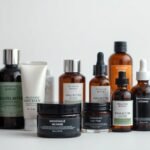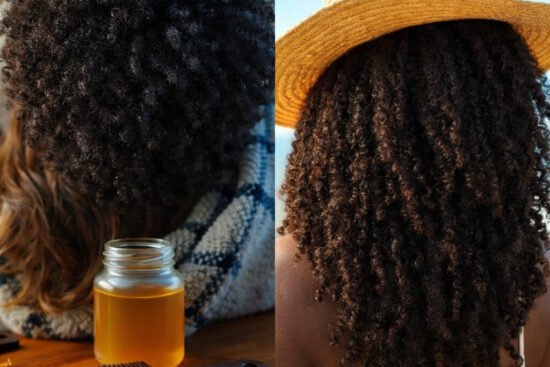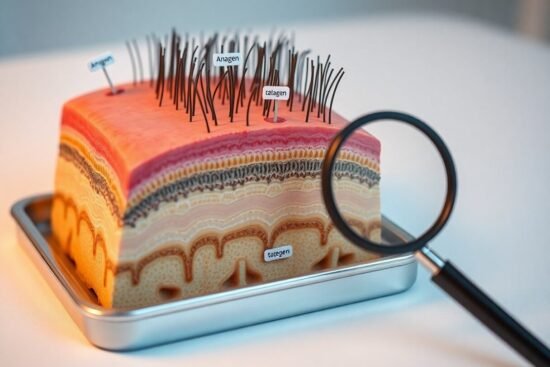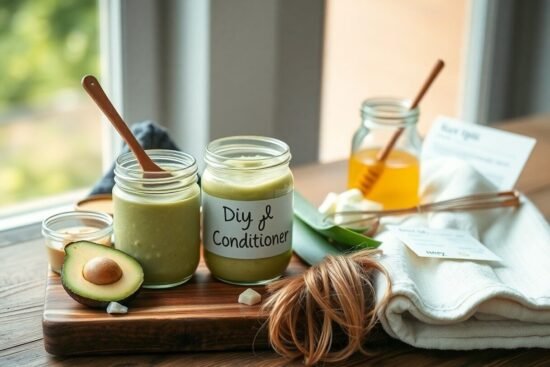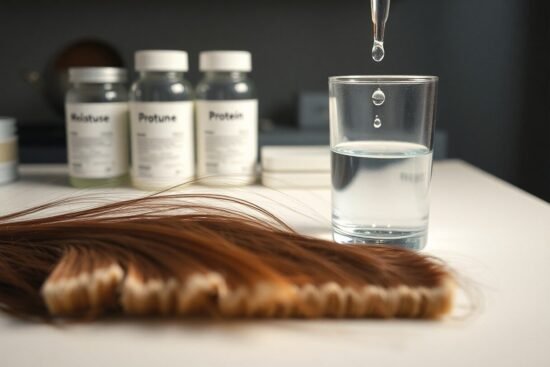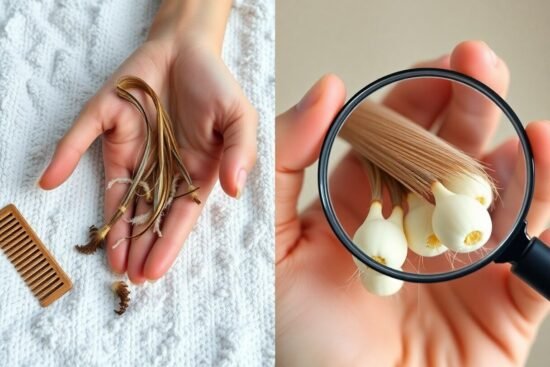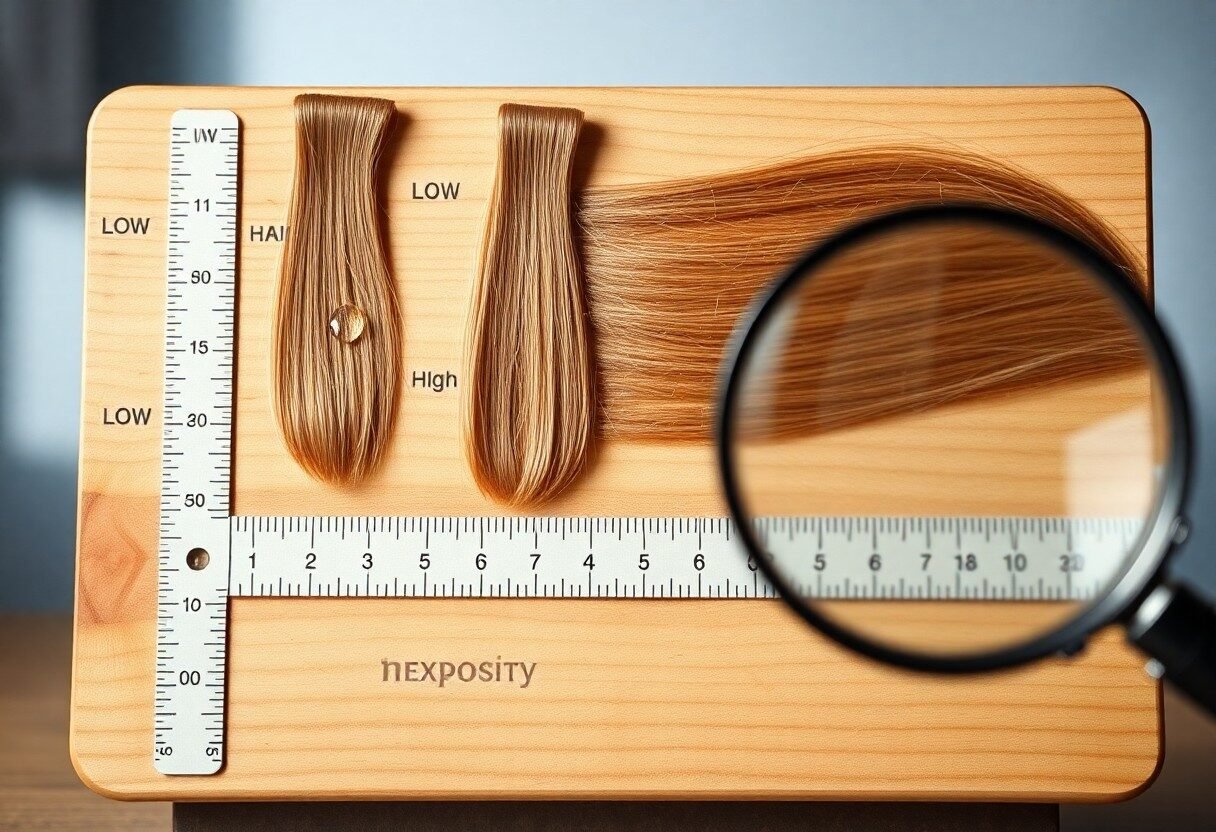
Just like fingerprints, your hair’s porosity is unique and plays a significant role in how it absorbs and retains moisture. Understanding hair porosity can help you tailor your hair care routine, ensuring you use the right products for your specific hair type. I’ll explain what porosity means, the different levels—low, medium, and high—and provide simple methods to test your hair’s porosity at home. By recognizing how your hair behaves, you can optimize your routine for healthier, more beautiful hair!
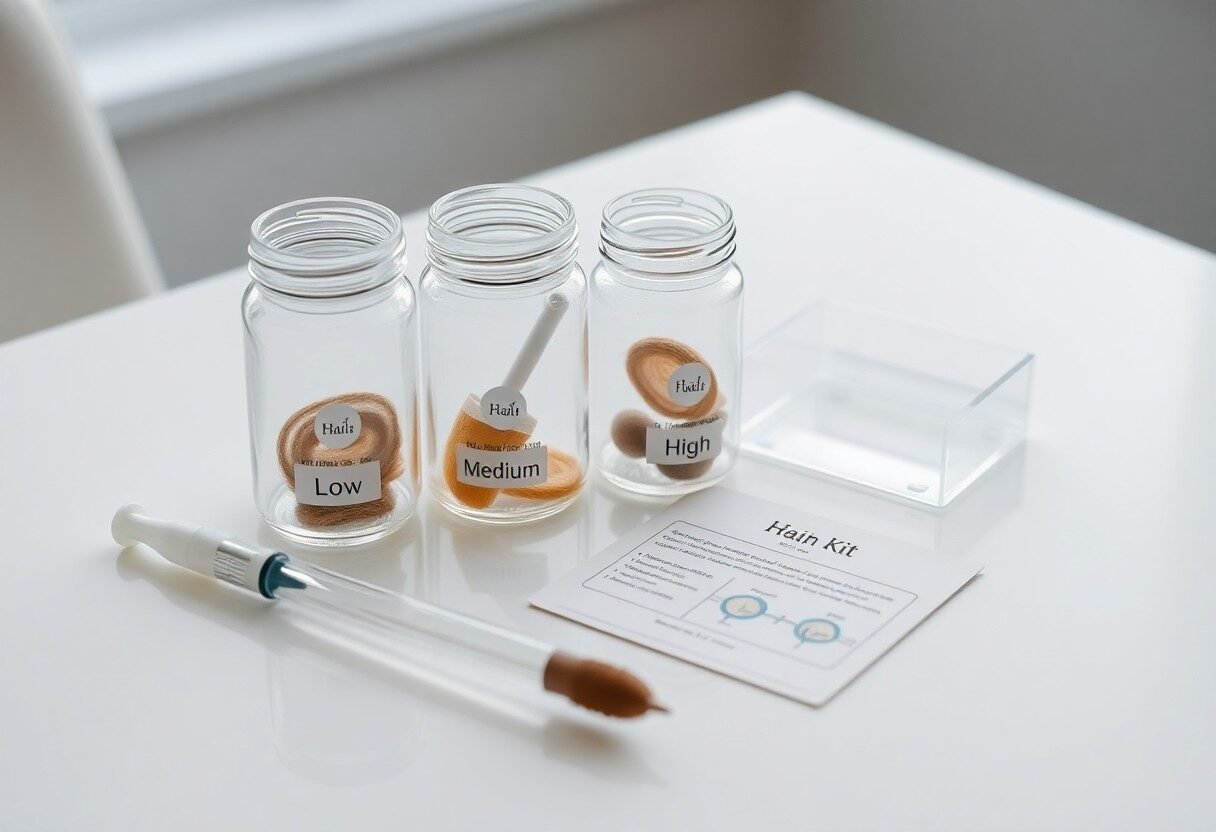
Key Takeaways:
- Hair porosity refers to the hair’s ability to absorb and retain moisture, affecting its overall health and styling.
- There are three types of hair porosity: low, medium (normal), and high, each requiring different care routines.
- To test hair porosity, a simple water test can be performed using a strand of hair to observe how quickly it sinks or floats.
- Low porosity hair tends to repel moisture and may benefit from heat for better product absorption.
- Medium porosity hair is well-balanced and versatile, usually requiring minimal adjustments in care routines.
- High porosity hair absorbs moisture quickly but can lose it just as fast, often needing heavy moisturizing treatments.
- Understanding your hair’s porosity can help inform product choices, leading to healthier and more manageable hair.
Decoding Hair Structure: The Role of Cuticles and Cortex
The composition of your hair is fundamental to understanding its health and porosity. Hair consists of two primary layers: the cuticle and the cortex. While the cuticle offers protection, the cortex plays a significant role in how your hair responds to treatments, moisture absorption, and overall strength. Grasping the function of these layers can empower you to make informed choices about your hair care routines, ensuring that you’re addressing specific needs effectively.
Understanding the Cuticle Layer
The cuticle is the outermost layer of your hair and consists of overlapping, scale-like cells that lie flat against each other. This barrier provides protection against environmental factors, heat, and chemical treatments. An intact cuticle contributes to your hair’s shine and smoothness, while damaged cuticles can lead to frizz and breakage. Paying attention to maintaining a healthy cuticle is fundamental in achieving silky, manageable hair.
The Importance of the Cortex in Hair Health
Delving deeper, the cortex is the thickest layer of hair, containing the majority of the hair’s strength and elasticity. It houses the pigment that gives your hair its color as well as keratin, the protein that forms the structure. This inner layer can store moisture, and its health directly impacts how well your hair retains nutrients and responds to styling. Strong cortexes lead to resilient hair; however, damage can manifest as brittleness or excessive dryness.
The cortex significantly impacts how your hair interacts with treatments and products. For instance, high-porosity hair, where the cuticle layer is lifted or damaged, can lead to a porous cortex that struggles to retain moisture. This can result in hair that feels dry or looks lifeless. I find that addressing issues within the cortex, such as strengthening protein treatments, can transform hair health over time. Reconciling the condition of the cortex allows you to tailor care for your unique hair type, promoting overall vitality and shine.
The Science of Porosity: How Hair Absorbs Moisture
Hair porosity is a reflection of hair structure and its ability to absorb moisture, which is governed by the condition of the cuticles—the outermost layer of the hair. The cuticles can either lie flat, allowing for better moisture retention, or they can become lifted or damaged, leading to increased absorption and quicker loss of hydration. This dynamic relationship impacts not only hair moisture levels but also how your hair reacts to products and environmental conditions. Understanding this interplay helps inform your hair care practices, ensuring that you choose the right products to support your unique needs.
The Three Levels of Porosity: Low, Medium, and High
Identifying the three levels of porosity—low, medium, and high—plays a significant role in developing a personalized hair care routine. Low porosity hair resists moisture absorption due to tightly packed cuticles, making it prone to product buildup. Medium porosity hair allows for a balanced absorption and retention of moisture, while high porosity hair readily absorbs moisture but struggles to retain it, leading to frizziness and breakage. Understanding where your hair falls on this spectrum helps in selecting the right products and methods tailored to your hair’s specific hydration needs.
Effects of Porosity on Hair Health and Maintenance
The porosity level directly influences how I maintain my hair and the effectiveness of the products I use. Low porosity hair, for example, benefits from lightweight, penetrating moisturizers that can effectively penetrate the cuticles. In contrast, high porosity hair often requires heavier creams and sealing oils to lock in moisture and prevent rapid evaporation. Understanding your hair’s porosity allows for optimized hair care practices, improving overall health, reducing breakage, and promoting a more manageable mane.
This tailored approach is especially beneficial for those struggling with hair issues. For instance, individuals with high porosity hair might find that incorporating protein treatments helps to fill in gaps in the hair shaft, improving its strength and elasticity. On the other hand, those with low porosity hair may need to avoid heavy oils that could cause buildup, instead opting for lighter formulations that nourish without weighing the hair down. Ultimately, knowing how to adjust your hair care routine based on porosity can significantly enhance your hair’s health and appearance.
Self-Assessment: How to Test Your Hair’s Porosity
Determining your hair’s porosity can guide you in choosing the right products and treatments tailored to its needs. You can assess your hair’s porosity using a few simple tests that I will explain, giving you insights into whether your hair is low, medium, or high porosity. These methods will help unveil the mysteries behind your hair’s behavior when it comes to moisture retention and product absorption.
The Water Test: Quick and Easy DIY Method
The water test is a straightforward, hands-on way to evaluate your hair’s porosity. Begin by taking a clean strand of hair, preferably one that has fallen out naturally. Place it in a bowl of water and observe how long it takes to sink or float. If it sinks quickly, your hair likely has high porosity. If it floats for an extended period, your hair might possess low porosity. A strand that gradually sinks indicates medium porosity.
Advanced Testing Techniques: The Strand and Slip Tests
If you want to dive deeper into understanding your hair’s porosity, the strand and slip tests can offer further insights. For the strand test, I suggest pulling a single hair strand from your head to assess its texture. If it feels rough and you can see raised cuticle scales, your hair may be high porosity. The slip test involves rubbing a strand of hair between your fingers; if it feels slippery, it likely suggests low porosity, while a gritty texture may indicate high porosity.
- Strand Test: Assess the texture of pulled hair.
- Slip Test: Rub hair between fingers to feel for grit or smoothness.
| Testing Method | Description |
|---|---|
| Water Test | Observe if hair sinks, floats, or gradually sinks in a bowl of water. |
| Strand Test | Check texture and feel of a single hair strand from your scalp. |
| Slip Test | Rub a strand between fingers to assess smoothness versus grit. |
Using the strand and slip tests allows you to gather a more comprehensive understanding of your hair’s porosity. By assessing the texture and behavior of your hair strands, you can pinpoint if your cuticles are tightly closed or more open, leading to either moisture retention or loss. I find that these tests not only clarify my hair’s needs but also enhance my overall hair care routine.
- I recommend performing these tests on clean, product-free hair.
- Take your time to observe the characteristics of your hair.
| Assessment Tips | Advice |
|---|---|
| Perform tests on different hair strands | Some hairs may display different porosities. |
| Keep a hair diary | Document results for future reference in your hair care regimen. |
Tailoring Your Hair Care Routine Based on Porosity
Now that you understand hair porosity, adapting your hair care routine is necessary for optimal health. High porosity hair often benefits from heavy, moisturizing products and regular deep conditioning, while medium porosity hair tends to thrive on balancing products that provide moisture without overwhelming it. If your hair is low porosity, you’ll want light leave-ins and heat application to help products penetrate your strands effectively. By aligning your products and techniques with your hair’s porosity level, you’ll notice improved manageability and shine.
Products and Techniques for Each Porosity Level
For high porosity hair, I recommend rich creams and oils like argan or castor oil, along with regular protein treatments to strengthen the cuticle. If your hair falls into the medium porosity category, utilizing a mix of moisturizing and protein-rich products often yields great results; look for balance in leave-in conditioners. Lastly, low porosity hair benefits from lightweight, water-based products and the occasional steam treatment to help ingredients absorb better, ensuring your hair remains hydrated without becoming weighed down.
Common Mistakes to Avoid When Caring for Your Hair
Avoiding common missteps is vital for maintaining your hair’s health. Many individuals mistakenly use overly heavy products on low porosity hair, leading to buildup and lifelessness. Similarly, those with high porosity hair may skip moisture retention practices. Another frequent error is neglecting regular trims, which can exacerbate damage over time. These oversights can significantly impact your hair’s overall condition and appearance.
Being mindful of your hair’s unique needs can prevent damage and create a healthier environment for growth. For instance, if you have high porosity hair and frequently blow-dry without proper heat protection, you risk further weakening your strands. Equally, using a protein treatment too often on medium porosity hair can lead to brittleness. Avoiding these behaviors not only safeguards your hair’s integrity but also allows you to focus on nurturing and enhancing your natural beauty.
The Impact of External Factors on Hair Porosity
Understanding how external factors influence your hair’s porosity is vital for proper care. Environmental elements can significantly change how your hair retains moisture. Common factors include humidity, temperature, and pollution, which can all alter your hair structure and its ability to absorb or release moisture. Here are a few primary influences:
- Humidity: Increases moisture absorption.
- Temperature: High heat can dry out hair.
- Pollution: Can damage hair cuticles, leading to higher porosity.
This relationship underscores the importance of adapting your hair care routine to environmental changes.
Environmental Influences: Humidity, Temperature, and Pollution
External conditions significantly affect hair porosity. For instance, high humidity can cause hair to swell, making it absorb more moisture, while excessively low temperatures may strip moisture away. Likewise, urban pollution can lead to increased porosity by damaging hair’s protective outer layer.
| Factor | Impact on Hair |
| Humidity | Increases moisture retention |
| Temperature | Can cause dryness and brittleness |
| Pollution | Damages hair cuticles, increasing porosity |
Lifestyle Choices: Diet, Hair Products, and Chemical Treatments
Your daily choices play a vital role in determining your hair’s health and porosity. A poor diet lacking necessary nutrients can weaken hair structure, while certain hair products may either help retain moisture or exacerbate porosity issues. Additionally, frequent use of harsh chemical treatments can strip hair of its natural oils, leading to increased porosity.
For example, a diet rich in vitamins and fatty acids can improve hair health, making it stronger and less porous. Using alcohol-free hair products can prevent excessive drying, while those with nourishing ingredients like coconut oil can help maintain moisture balance. Likewise, minimizing harsh chemical treatments can preserve hair integrity, preventing it from becoming overly porous. Each of these lifestyle aspects contributes to how well your hair can manage moisture and overall health.
Conclusion
With these considerations, I’ve come to understand that hair porosity significantly impacts how my hair retains moisture and responds to products. Testing your porosity is straightforward and can provide valuable insights for your hair care routine. By knowing whether your hair is low, medium, or high porosity, you can choose the right products and techniques that suit your unique needs, ultimately leading to healthier, more manageable hair. Empower yourself with this knowledge, and watch your hair thrive.
Understanding Hair Porosity – FAQs
Q: What is hair porosity?
A: Hair porosity refers to your hair’s ability to absorb and retain moisture. It is determined by the structure of your hair cuticle, which is the outermost layer. Hair porosity can be classified into three categories: low porosity, normal porosity, and high porosity, each of which has distinct characteristics and requires different care approaches.
Q: How can I determine my hair porosity?
A: One simple method to test your hair porosity is the “water test.” Take a few strands of clean, dry hair and place them in a glass of water. Observe how the hair behaves: if it sinks quickly, it’s likely high porosity; if it floats for a while before sinking, it’s normal porosity; and if it remains floating, it indicates low porosity.
Q: What is low porosity hair?
A: Low porosity hair has a tightly bound cuticle layer, making it difficult for moisture to enter. This type of hair often repels water and can become easily weighed down by heavy products. People with low porosity hair often benefit from heat during moisturizing treatments and lighter products that won’t clog their hair.
Q: What does it mean if I have high porosity hair?
A: High porosity hair has gaps and holes in the cuticle layer, allowing moisture to be absorbed easily but also leading to moisture loss. This hair type can dry out quickly and may require more frequent conditioning and sealing to maintain hydration. Products rich in protein and moisture are often beneficial for high porosity hair.
Q: How does hair porosity affect my hair care routine?
A: Understanding your hair porosity can help you tailor your hair care routine for optimal hydration and health. Low porosity hair may require lighter products and the use of heat to aid in absorption, while high porosity hair might benefit from richer creams and proteins to maintain moisture. Choosing the right products and techniques ensures your hair remains healthy and manageable.
Q: Can hair porosity change over time?
A: Yes, hair porosity can change due to several factors including hair damage from color treatments, heat styling, environmental factors, and overall health. Regular trimming, minimizing heat use, and taking care of your nutritional needs can help maintain healthier hair and potentially improve porosity over time.
Q: What products should I avoid based on my porosity type?
A: For low porosity hair, it’s best to avoid heavy oils and creams that can build up. Stick to lighter, water-based products. For high porosity hair, avoid products that contain a lot of alcohol or drying agents, as they can exacerbate moisture loss. Tailoring your product selections to your porosity type can lead to better hair health and appearance.



